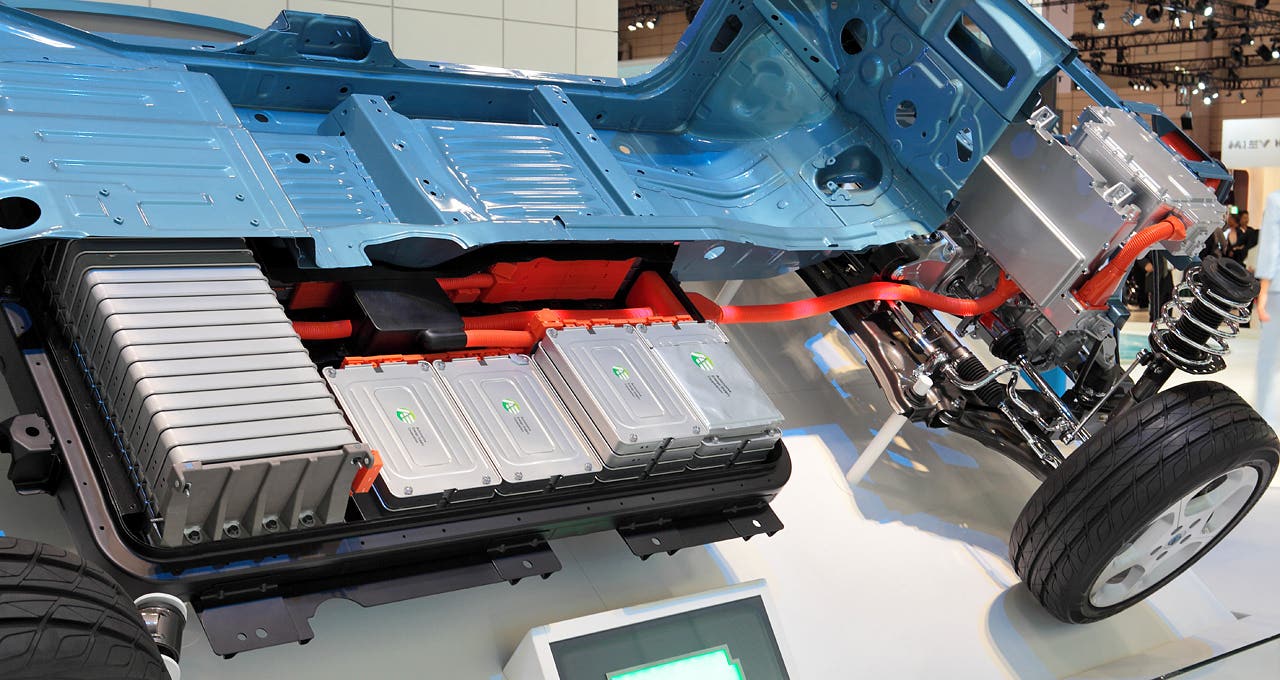Battery breakthrough could help electric cars travel a million kilometers
Lithium-ion batteries operate by converting electrical energy into chemical energy for storage and then back into electrical energy

Lithium (Li) secondary batteries, commonly used in electric vehicles, store energy by converting electrical energy to chemical energy. (CREDIT: CC BY-SA 3.0)
Electric vehicles (EVs) are transforming the transportation landscape, but one major challenge remains: battery lifespan. Over time, EV batteries degrade, necessitating costly and environmentally damaging replacements. However, recent research suggests a breakthrough that could significantly extend the lifespan of these batteries, allowing vehicles to drive up to a million kilometers without needing a new battery.
The crux of the issue lies in how lithium-ion batteries, which power most EVs, store and discharge energy. These batteries operate by converting electrical energy into chemical energy for storage and then back into electrical energy when needed.
This process relies heavily on nickel-based cathode materials, known for their ability to store a large quantity of lithium ions essential for the battery's function. Unfortunately, these nickel materials consist of tiny crystals that degrade over time with each charge and discharge cycle, leading to reduced battery performance.
To address this degradation, researchers have explored the potential of producing cathode materials as a single large particle or crystal. Unlike their smaller, crystalline counterparts, these larger particles are less prone to breaking down, potentially offering a more durable solution for EV batteries.
The recent study focused on finding the optimal temperature to synthesize these single-crystal materials with high quality. Researchers experimented with various temperatures, analyzing how each affected the material's capacity and long-term performance. They discovered a critical temperature at which these materials could be produced efficiently and with superior quality, significantly enhancing their durability.
When the synthesis process occurs above this critical temperature, a phenomenon known as "densification" takes place. During densification, the grains within the material grow larger, and any empty spaces between them are filled. This results in an extremely hard material that resists degradation, promising a much longer battery life.
"We have introduced a new synthesis strategy to enhance the durability of nickel-based cathode materials," explained Kyu-Young Park, a professor at Pohang University of Science & Technology, where the research was conducted. "We will continue our research to make secondary batteries for electric vehicles cheaper, faster, and longer-lasting."
Related Stories:
This study, detailed in the journal ACS Applied Materials & Interfaces, marks a significant step toward improving the efficiency and longevity of EV batteries. The findings suggest that with the right production methods, it’s possible to create batteries that not only last longer but also offer greater reliability, potentially driving down the cost of EV ownership and reducing the environmental impact associated with battery replacement.
The research received support from POSCO Holdings and the Basic Research Program of the Ministry of Science and ICT. These findings could play a crucial role in the future of electric vehicles, offering a solution to one of the most significant barriers to widespread EV adoption: battery lifespan.
With ongoing research and development, this breakthrough could lead to the production of EV batteries that are more cost-effective, environmentally friendly, and capable of meeting the demands of long-distance driving without frequent replacements.
This advancement not only holds promise for EV owners but also for the broader goal of reducing carbon emissions and mitigating climate change. The potential for batteries that can last for a million kilometers could be a game-changer in the quest for sustainable transportation solutions.
Note: Materials provided above by The Brighter Side of News. Content may be edited for style and length.
Like these kind of feel good stories? Get The Brighter Side of News' newsletter.



